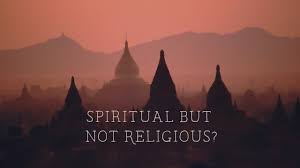Third Sunday of Easter
“The Lord has truly been raised.” Lk: 24:34
The Emmaus story, described only in the gospel of Luke, can easily be read as the story of our individual faith lives.
Place yourselves for a moment in the shoes of the two disciples walking away from the community of those who claimed they witnessed Jesus after he had been crucified and buried.
These former followers of Jesus were disheartened, dejected, discouraged.
As each of us has been from time to time.
The Jesus these disciples had seen curing the sick, the lame and the blind, the Jesus they had put all their trust in as the one who would deliver Judaism from Roman rule, the Jesus they had hoped was the messiah the prophets foretold, had been crucified.
They could no longer believe.
And so, they were abandoning the community of believers and returning home.
Yes, some women claimed that the tomb was empty, but they considered the report to be nonsense. For them, believing could come only from seeing, not hearing.
For these two, and maybe for you and me, all the suffering Jesus went through made no sense. Why would a “prophet mighty in deed and word before God and all the people” have to bear such brutal suffering and ignominious death?
Shaking their heads in disbelief, they decided to give up hope and abandon the community that had nourished them for so long.
Then … along comes a stranger – a man they “see,” but don’t “recognize.”
We’ve all had the experience of not re-cognizing – at least, at first. Only when the person does something unique, something iconic, does insight flash in our brain and we suddenly “see” in a whole new way.
And notice what the “stranger” does: He stresses the importance of believing all that the prophets had spoken, not just some select passages. The stranger then interprets for them, not only all the prophets but all the scriptures.
Until that moment, the disciples’ hope in Jesus was based on only some of the prophets and scriptures, not the ones showing them that as the Christ, the Messiah, the One who would lead humanity to a whole new understanding of God, Jesus had to suffer the passion and enter into his glory. He had to surrender himself totally to the Father in order to become one with Him in glory.
Now, the two were intrigued.
So, they invited the stranger to share a meal with them at their home. “Stay with us, for it is nearly evening and the day is almost over.” And Jesus went in to stay with them.
Even though he is invited as a guest, Jesus suddenly takes the position of being the host. The table becomes his. The bread becomes his body – broken for all humankind. This meal becomes the first eucharistic banquet celebrated after the death and resurrection of Jesus.
Just as Jesus did when he hosted some 5,000 people who had nothing to eat, and just as Jesus did for the disciples on the night before he died, Jesus “takes” the bread, “gives thanks,” “breaks the bread,” and “gives” it to the travelers who had left the community of believers.
Then, they “recognized” him!
The famous artist, Caravaggio, created a remarkable painting called “The Supper at Emmaus” illuminating the magic of this moment. What Caravaggio painted was the precise moment when these two travelers recognized Jesus “in the breaking of the bread.”
When that happens, Caravaggio depicts one of the former disciples flinging his arms wide as he stares at Jesus. The other former disciple grips tightly the arms of his chair, seemingly ready to spring from his seat entirely, unable to control himself.
“Their eyes were opened,” Luke tells us.
They recognized him!
Once the former disciples freed themselves from their self-focus, and began to listen intently to a stranger, they were open to the possibility of inviting him to stay with them. They had moved from their preoccupation with their own intense grief, and were able to focus on someone else.
Then, when Jesus says the inimitable words that we use at Mass to this day – he “took,” he “gave thanks,” he “broke,” he “gave” – then they not only saw, they recognized.
And notice that the telling of the Scriptures came first – just as it does every time we celebrate the Eucharist to this day. The liturgy of the Word prepares us for experiencing Christ in the eucharist. And, like the breaking of the bread, which enabled the disciples to understand their experience of Christ by opening the scriptures to them, the eucharist enables us to grasp the liturgy of the Word.
Word and Bread.
Together they help each of us to not just “see,” but to “recognize” the action of God in our midst, to nourish us with the food that will enable us to welcome the stranger in our lives, and to re-new our efforts to reclaim our mission to be a people who, like the disciples in today’s story, “set out at once” to reclaim our enthusiasm and our joy in being disciples whose lives now shout out:
“The Lord has truly been raised.”
Ted Wolgamot, Psy.D.
11809194.1
4/27/17



